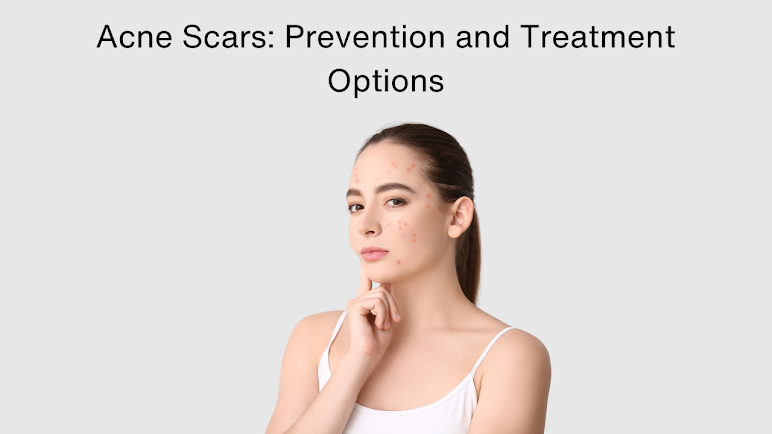Acne Scars: Prevention and Treatment Options

Welcome to the Gleuhr skin and dental clinic in Chandigarh and we provide best skin, hair and dental treatment in tricity and we also sell natural skin and hair products in all over world. We have best skin specialist in Chandigarh who are highly educated and dedicated to their work. https://clinic.gleuhr.com/

Laser skin resurfacing has emerged as a popular and effective cosmetic procedure, offering a range of benefits for individuals seeking to improve the appearance and texture of their skin. This non-invasive technique utilizes laser technology to address various skin concerns, such as wrinkles, scars, and uneven pigmentation. In this comprehensive guide, we will explore the benefits, potential side effects, and the treatment process associated with laser skin resurfacing.
Wrinkle Reduction: One of the primary benefits
of laser skin resurfacing is its ability to diminish fine lines and wrinkles.
The laser targets the outer layer of the skin, stimulating collagen production
and promoting a smoother, more youthful complexion.
Scar Revision: Laser skin resurfacing is also
effective in reducing the appearance of scars, including those resulting from
acne, surgery, or injuries. The laser promotes cell turnover, helping to fade
scars and improve overall skin texture.
Sun Damage Repair: Exposure to the sun's harmful
UV rays can cause long-term damage to the skin, leading to issues like sunspots
and uneven pigmentation. Laser skin resurfacing can address these concerns,
restoring a more even skin tone and reducing sun-induced damage.
Tightening and Firming: The laser's heat
stimulates collagen fibers, which leads to skin tightening and increased
firmness. This can be particularly beneficial for individuals experiencing mild
skin laxity and seeking a non-surgical solution for facial rejuvenation.
Improved Skin Texture: Uneven skin texture,
characterized by roughness or irregularities, can be effectively treated with
laser skin resurfacing. The procedure smoothens the skin's surface, resulting
in a more refined and polished appearance.
While laser skin resurfacing is
generally safe, it is essential to be aware of potential side effects, which
can vary depending on the type of laser used and individual skin
characteristics.
Redness and Swelling: Immediately after the
procedure, patients may experience redness and swelling, resembling a sunburn.
These side effects are typically temporary and subside within a few days to a
week.
Pigment Changes: Some individuals may notice
temporary changes in skin pigmentation, such as darkening or lightening of the
treated areas. This usually resolves over time, but in rare cases, it may
persist.
Scarring: Although uncommon, there is a risk of
scarring, particularly if post-treatment care instructions are not followed
diligently. Patients must avoid picking at scabs and protect their skin from
excessive sun exposure.
Infection: Infections are rare but can occur if
proper hygiene measures are not maintained. It is crucial to keep the treated
area clean and follow post-treatment care guidelines provided by the
dermatologist.
Herpes Simplex Reactivation: Patients with a
history of cold sores may experience reactivation of the herpes simplex virus.
Antiviral medications are often prescribed before the procedure to prevent this
complication.
Consultation and Assessment: The first step in
laser skin resurfacing is a consultation with a qualified dermatologist or
cosmetic surgeon. The professional will assess the patient's skin type,
concerns, and medical history to determine the most suitable laser and
treatment plan.
Preparation: Before the procedure, patients may
be advised to avoid certain medications, such as blood thinners, and follow
specific skincare routines to prepare the skin for the treatment.
Anesthesia or Topical Numbing: Depending on the
extent of the procedure, the patient may receive local anesthesia, sedation, or
topical numbing to ensure comfort during the treatment.
Laser Application: The laser is carefully
applied to the targeted areas, precisely removing the outer layer of skin. The
depth of penetration and intensity of the laser can be adjusted based on the
specific skin concerns being addressed.
Post-Treatment Care: Following the procedure,
patients are provided with detailed post-treatment care instructions. This
typically includes the use of gentle skincare products, avoiding sun exposure,
and keeping the treated area clean to minimize the risk of complications.
Recovery: The recovery period varies depending
on the intensity of the treatment. Patients may experience redness, swelling,
and peeling during the initial days, but these effects gradually subside,
revealing improved skin texture and tone.
Laser skin resurfacing has become a popular choice for individuals seeking to rejuvenate their skin and address various cosmetic concerns. The procedure's ability to reduce wrinkles, scars, and sun damage makes it a versatile option for achieving a more youthful and radiant appearance. While potential side effects exist, proper pre-treatment assessment, skilled execution of the procedure, and diligent post-treatment care significantly contribute to its safety and effectiveness. As with any cosmetic procedure, individuals considering laser skin resurfacing should consult with a qualified professional to ensure the most appropriate treatment plan for their unique needs.
Comments
Post a Comment